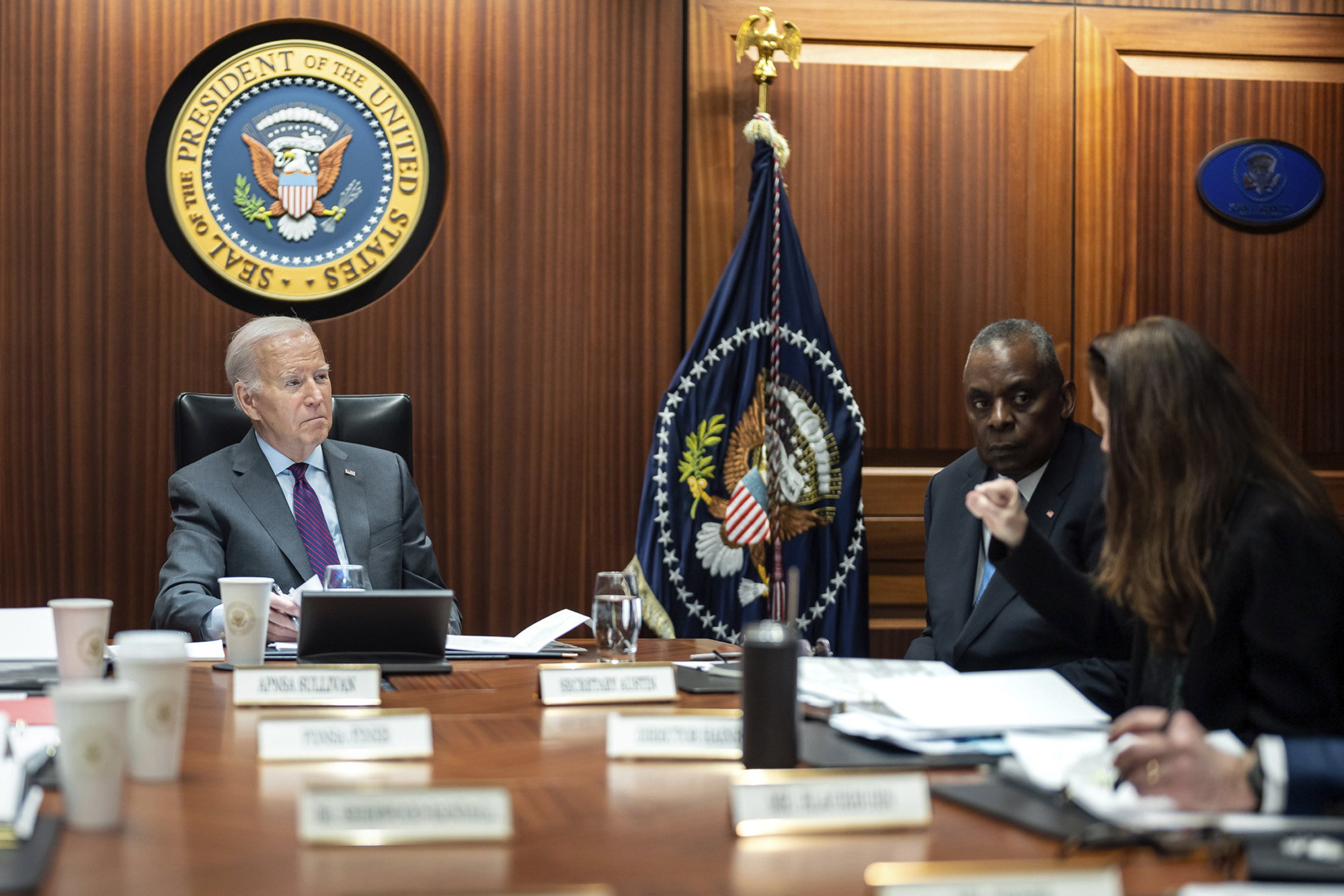
Analysis | US seeks just-tough-enough response to deadly attack on American forces in Jordan
- Iranian forces operating outside the country could be targets of US action
- Attack on Sunday killed three US soldiers and wounded more than 40 troops
US President Joe Biden’s administration is seeking a response to the deadly attack on US forces in Jordan that’s tough enough to deter Iran and its proxies without sparking direct warfare with the Islamic Republic, according to US officials and experts.
“We will do whatever we need to do to protect our forces going forward, but certainly at the end of the day we are not looking to engage in a wider conflict but merely to ensure regional security and stability,” Major General Pat Ryder, a Pentagon spokesperson, said on Monday in an interview on Bloomberg Television.
Biden is facing mounting political pressure at home to respond forcefully to the drone assault, which killed three US soldiers and wounded dozens of others.
They were the first Americans to die from such an attack since regional tensions were inflamed by the start of the war between Israel and Hamas in Gaza in October.

“Hit Iran now,” said hawkish Republican Senator Lindsey Graham. “Hit them hard.”
The most likely scenario is that the US will target Iranian-aligned assets outside Iran, according to Suzanne DiMaggio, a senior fellow at the Carnegie Endowment for International Peace. “A direct attack on Iranian territory runs the high risk of igniting an expanded war by design or by accident” and jeopardising ongoing hostage and ceasefire negotiations in Israel’s war with Hamas in Gaza, she said.
Enemy drone that killed US troops in Jordan mistaken for US drone: report
Hamas is designated a terrorist organisation by the US and EU.
The US could hit forces of Iran’s Islamic Revolutionary Guards Corps deployed in locations such as Syria, Iraq or Yemen. Thomas Spoehr, a retired US Army lieutenant general and national security consultant, said “they have to hit uniformed Iran service members”.
“I don’t think these people are probably hard to find,” he said.
John Kirby, spokesman for the US National Security Council, told reporters at the White House that Biden met with his national security team both Sunday and Monday and is “weighing the options before him,” Kirby said. “We will respond. We’ll do that on our schedule, and our time, and we’ll do it in the manner of the president’s choosing as commander-in-chief.”
At least so far, it’s been of value for both the US and Iran to maintain ambiguity about whether the groups armed and aided by Iran are acting with a measure of independence.
On Sunday, Biden didn’t directly blame Tehran, saying the attack “was carried out by radical Iran-backed militant groups operating in Syria and Iraq”.

Iran said any suggestion it was responsible was “baseless” and insisted the groups that it’s allied with act independently.
“Resistance groups in the region do not take orders from the Islamic Republic,” Foreign Ministry spokesman Nasser Kanaani said. He was referring to what’s often called the “axis of resistance” – a network of militias in territories from Yemen to Iraq and Gaza that are supported by Tehran and share its opposition to the US and Israel.
Washington’s response will be stronger than its most recent retaliations against Iranian proxies, according to a person familiar with the US position, underlining the risks of further escalation in a conflict that’s already spread from Gaza across the Middle East.
“The US faces bad options only,” said Firas Modad, head of Modad Geopolitics, a risk-advisory firm.
Cargo ship seized by Yemen’s Houthis now a ‘tourist attraction’
Biden is under “immense pressure” to respond to the deaths in Jordan, but a direct conflict with Iran would likely result in higher energy prices and significant casualties, he said.
Oil initially rose 1.5 per cent on Monday, with Brent climbing above US$84 a barrel, though it later reversed those gains. Iran’s currency, the rial, fell to its weakest level on the black market since the start of the war between Israel and Hamas, according to Bonbast.com, a website that tracks the exchange rate.
Politically, the challenge for Biden is to project toughness toward Iran without embroiling the US in active warfare – and without raising oil prices in an election year. That could sting American consumers by pushing up the cost of fuel.
The US has become increasingly embroiled in the Middle East since October 7, when Hamas attacked Israel.
The Pentagon sent more naval and air forces to the region to support the Israelis and deter attacks on them from the likes of Hezbollah, which is based in Lebanon.
This month, it’s launched missiles at Yemen to try to stop assaults on commercial and military ships in the Red Sea by the Houthis. Hamas, Hezbollah and the Houthis are all armed and supported by Iran.
In 2020, under then-President Donald Trump, the US assassinated Iranian general Qassem Soleimani in Iraq, saying he was responsible for planning attacks on Americans through Tehran’s proxies.
Iran responded by striking US bases in Iraq, injuring many troops but not killing any. Tensions between Washington and Tehran eased after that.
“The US will retaliate – that much is clear,” said Ziad Daoud, chief emerging markets economist for Bloomberg Economics. “The question is whether Iran will absorb the hit, or react to the retaliation. At stake is higher oil prices and a potential global recession.”

